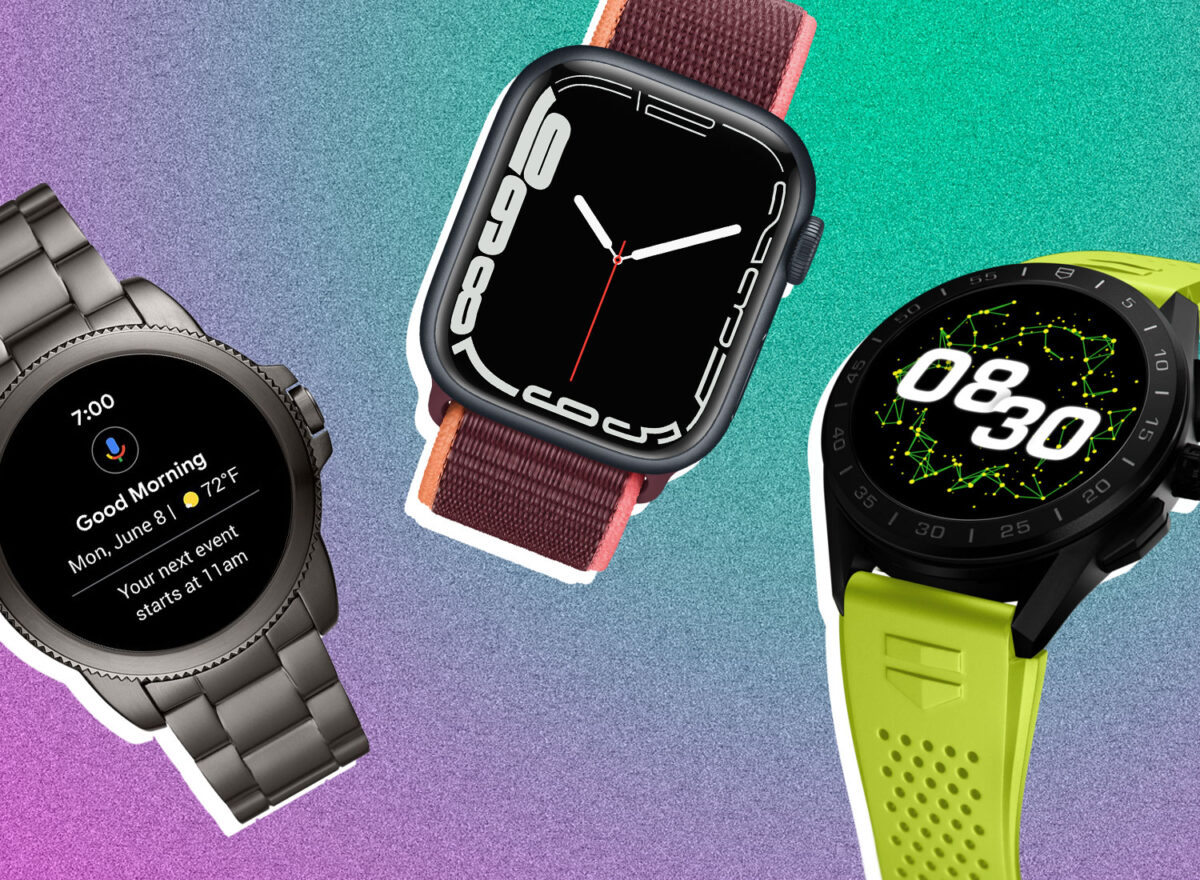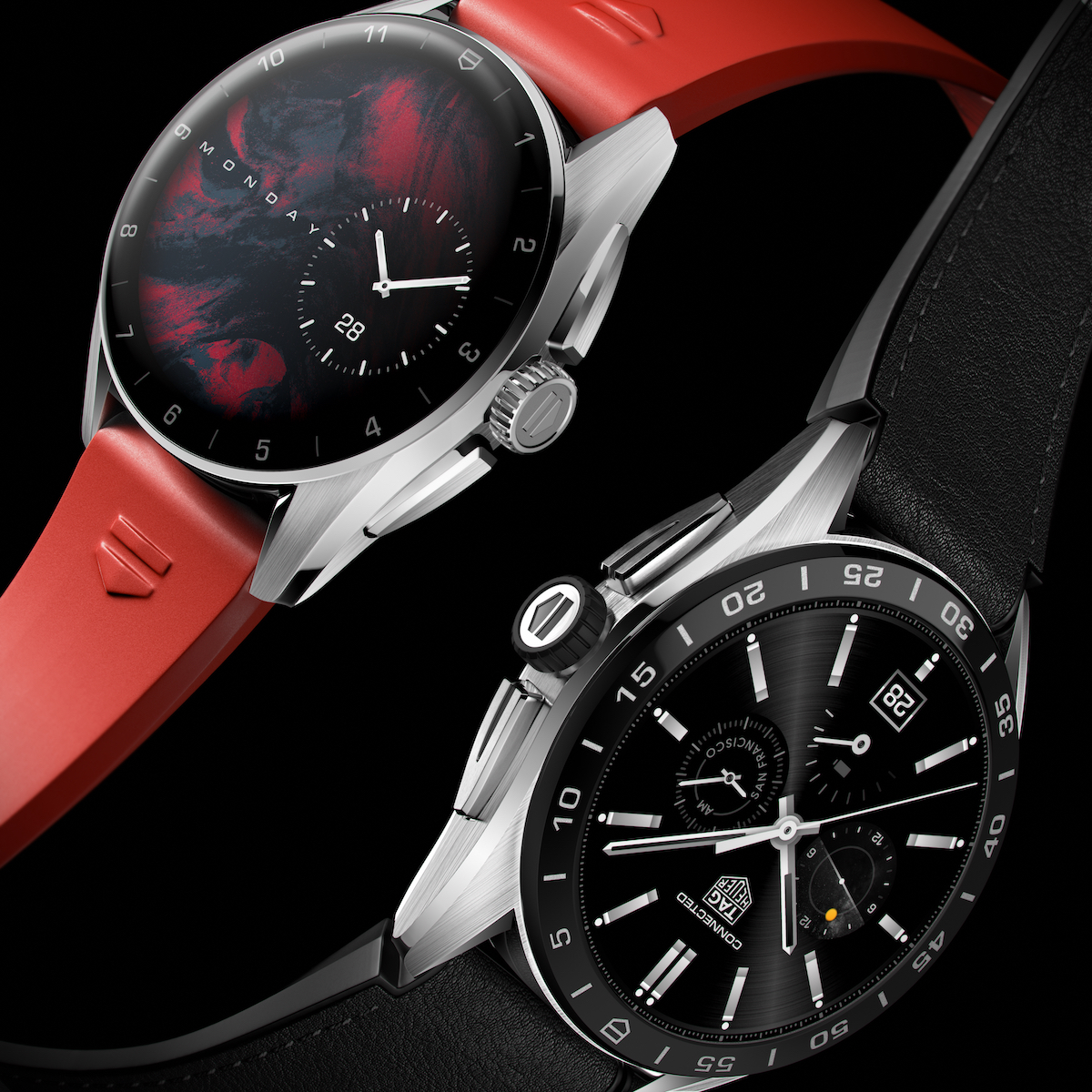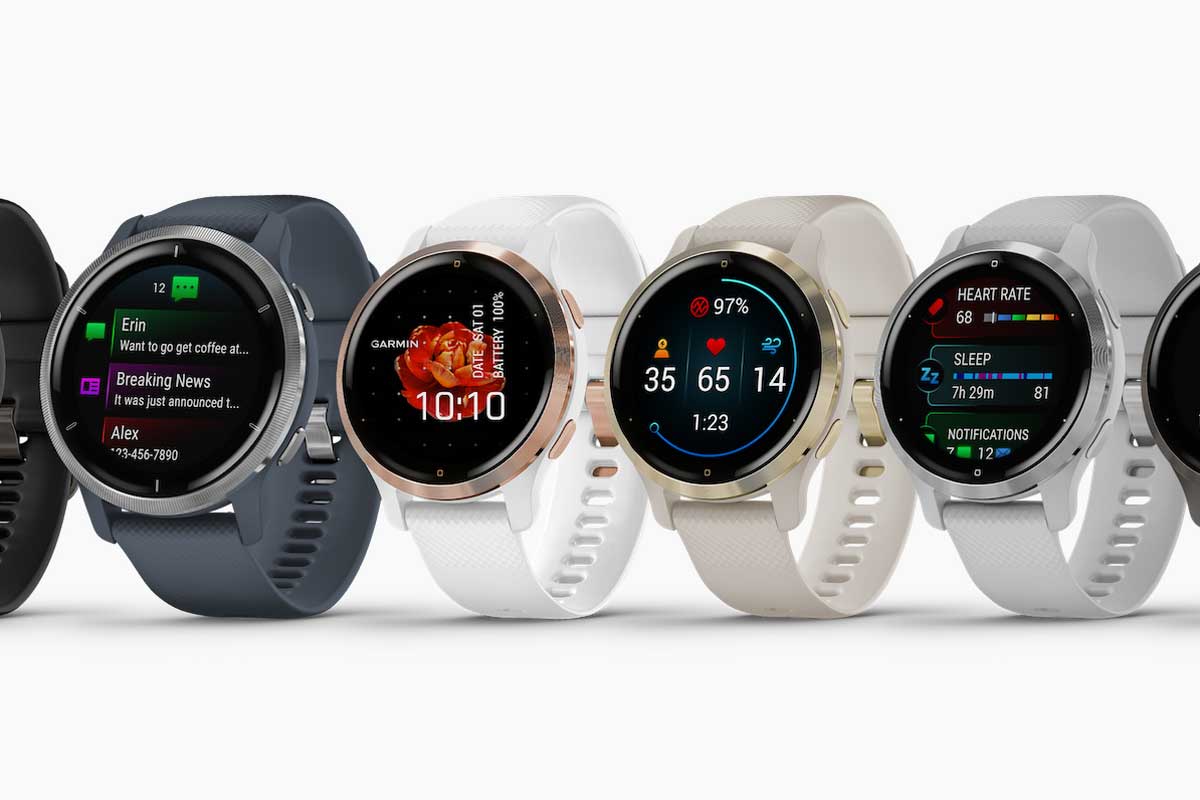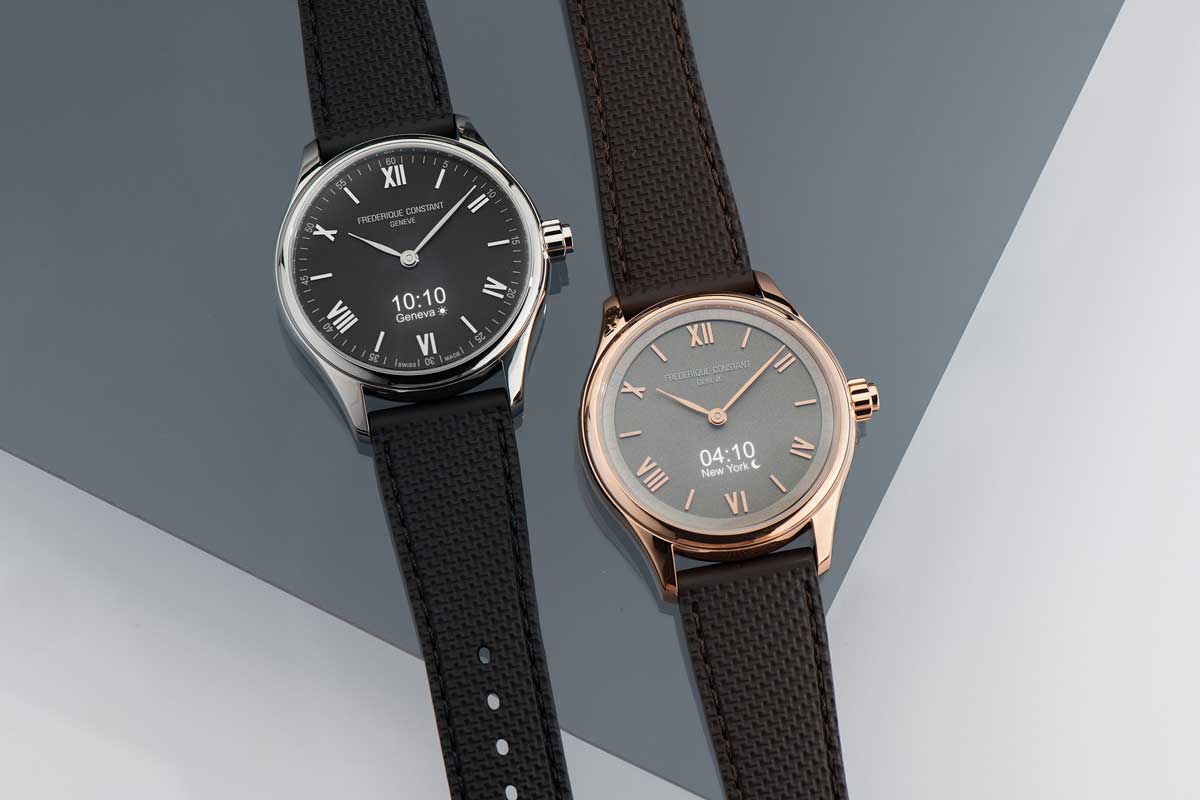Smartwatches 101 – Since the introduction of the Apple Watch, a plethora of manufacturers have also followed suit, offering their own interpretation of what they believe makes a great smartwatch. Most combine the ability to make calls, stream music and send messages with fitness functions such as GPS tracking, heart rate monitors and waterproof capabilities so you can even wear them swimming.
They represent yet another step of technological evolution, and we won’t be surprised if one day, smartwatches transform into small chips that get injected into your skin. Freaky. But let’s not get distracted. For now, smartwatches are getting smarter every year, so choosing the right smartwatch for your needs isn’t as easy as it once was.
What you need to consider before buying a smartwatch:
- Battery life
- Health functions
- Productivity functions
- Design & Comfort
That’s why we’ve put together this list of the best smartwatches you can buy, covering their main features (i.e., why you’ll want one) and that all-important battery life.
TAG Heuer Connected Calibre E4
 1/17
1/17
Battery Life: Up to 24 hours
Price: From AU $2,600/US $1,800
It was clear that smartwatches weren’t just a flash in the pan when prestigious watchmakers such as TAG Heuer got involved. The Swiss luxury brand’s Connected smartwatch was first launched back in 2015, and since then has undergone a number of tweaks and changes to keep it ahead of the pack.
The latest version of the Connected, the Calibre E4, is the best yet: available in either a 42mm or 45mm case size, it’s a very fitness-focused watch, boasting a built-in heart rate monitor, altimeter and GPS for accurate tracking plus heaps of bespoke fitness apps including running, cycling, swimming and guided workout programs. There’s even a dedicated Golf Edition of the Connected for those looking to boost their golf game. Navigation is simple thanks to the mechanical pusher buttons on the side, saving you from having to use the touchscreen during a workout.
It’s by no means the cheapest option on the market, but then again, other smartwatches aren’t TAG Heuers. So, if having luxury accessories and the best of the best is a top priority for you, the TAG Heuer Connected Calibre E4 is hard to beat.
Apple Watch Series 7
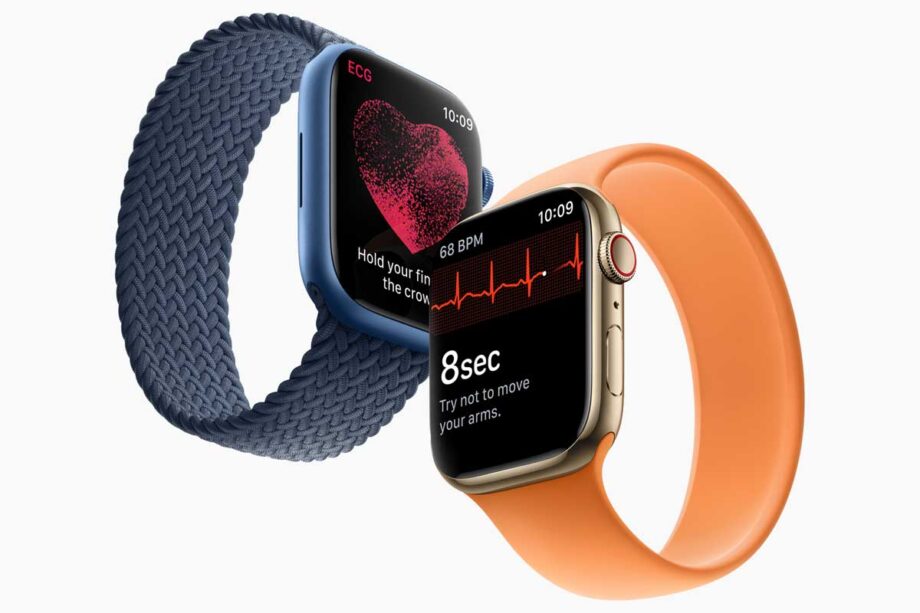 2/17
2/17
Battery Life: Up to 18 hours
Price: From AU $599/US $399
There’s no denying, the Apple Watch really is one of the best smartwatches out there. It looks good, is quick to use and ticks off pretty much every feature you could need (partly because Apple tells you that you need it). While it will of course only work with iPhones, meaning Android owners have to look elsewhere, for those who do own Apple’s ubiquitous phone, there really isn’t anything better.
The latest Series 7 Apple Watch arrives with a much larger screen, which allows it to now display a full QWERTY keyboard for replying to messages, as opposed to speaking into the watch or using the weird handwriting section on previous models. It’s waterproof to 50-metres, can stream music wirelessly (only if you have the cellular model) and will give you an overview of your day, both in terms of fitness and your agenda.
Samsung Galaxy Watch4 Classic
 3/17
3/17
Battery Life: Up to 40 hours
Price: From AU $549/US $350
There are many great rivalries within tech and Apple vs Samsung is one of the most fierce. If you own an Android device, Samsung is undoubtedly the first brand you’ll turn to. So, it’s no surprise that Samsung makes a great smartwatch rival to the Apple Watch, but it takes a slightly different approach.
The Galaxy Watch4 Classic is one of the latest models to come from the South Korean manufacturer (along with the Galaxy Watch4), is made from stainless steel and even features a rotating bezel, giving off the illusion that it’s a traditional watch. But with a full suite of fitness tracking sensors and monitors inside, along with software to show you your progress, it’s a truly versatile watch companion with serious smarts.
Fitbit Sense
 4/17
4/17
Battery Life: Up to 7 days
Price: From AU $450/US $300
Yes, Fitbit does make a smartwatch too. While the company has long been a champion within the fitness wearable arena, it has also moved into the smartwatch space. The Fitbit Sense is the very latest smartwatch to join the company’s line-up, and it comfortably lays claim to being one of the company’s best.
Capable of being able to track pretty much anything you can think of, whether it be a health-related metric or a workout, as well as being able to accept calls and give you the option of replying to messages, it does everything you could possibly need, firmly cementing its place as one of the best smartwatches around. Plus, the battery life is incredible, especially when compared to rivals.
Garmin Fenix 6
 5/17
5/17
Battery Life: Up to 9 days
Price: From AU $999/US $550
Available in a number of different configurations, each with its own feature set, the Garmin Fenix 6 (and its variants) lays claim to being the most comprehensive smartwatch around. While it’s certainly geared more towards activity and outdoor pursuits, it also offers many of the conventional features you’d expect from a high-end smartwatch, such as being able to pay for products using Garmin Pay, and allowing you to send messages and make calls.
The Garmin Fenix 6 can do so much, there actually wouldn’t be enough space in this section to write it all down. Basically, if you want to track it, the Fenix 6 will give you the option. It’s not cheap, but when it replaces your conventional watch and then some, it’s worth every cent.
Timex Ironman R300
 6/17
6/17
Battery Life: Up to 28 days
Price: From AU $234/US $129
Don’t let the low price fool you, the Timex Ironman R300 is still a great smartwatch and one that fitness enthusiasts, in particular, should take note of.
That’s because it’s a dab hand at recording accurate information. It has a built-in GPS and a heart-rate monitor, which constantly measures your heartbeat, even without having to select an option, and all data can be viewed within the companion app – along with sleep data – to get a clear overview of your health and fitness progress. It’s water-resistant to 50-metres too, so can survive a dunk.
As a smartwatch, it will show you notifications from your phone for things such as calls, messages and emails, although you can’t necessarily reply to these directly from the watch. We appreciate the Ironman R300 might not offer the full bells and whistles as some of the other smartwatches on this list, but for those on a budget who require great fitness features, it’s well worth looking at.
Garmin Venu 2
 7/17
7/17
Battery Life: Up to 11 days
Price: From AU $299/US $200
If you don’t have a minimum of AU$1,000 to spend, but you like Garmin’s approach to the segment, the Venu 2 might be more appealing. It too is available in various versions, which can also dictate the design (there are square and circular cases) but the vast majority all rock the same feature set.
That includes health and workout tracking for a number of different sports, a Body Battery monitor to tell you how much juice you’ve got left in the tank, and built-in access to various music streaming apps. The Venu 2 offers slightly more than the basics, maybe not quite so much as the big guns, making it a great all-rounder.
Apple Watch SE
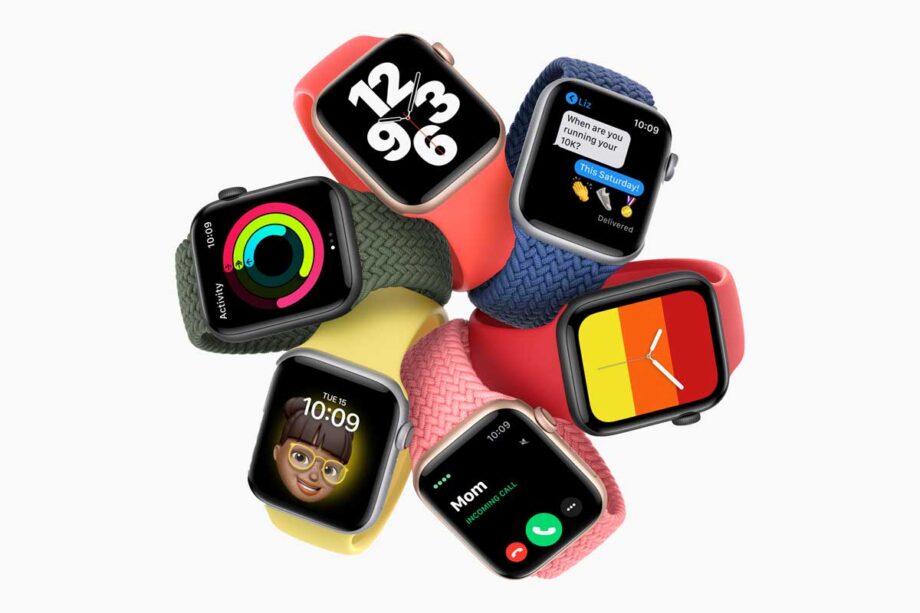 8/17
8/17
Battery Life: Up to 18 hours
Price: From AU $429/US $279
Apple has, for a long time, offered a more wallet-friendly version of its flagship products allowing even more people to buy into the Apple ecosystem. The same can be said of the Watch, as the Apple Watch SE undercuts the Series 7 by some margin, yet doesn’t really miss out on too many features.
The main areas of differentiation are in the display: the SE’s is ever so slightly smaller and not as bright, and it doesn’t get an ECG monitor or Sp02 blood oxygen sensor. But, given these are features that have only been added to watches recently – and some cynics will say they’re unnecessary and just an excuse to claim smartwatches are evolving – you might not see that as a dealbreaker.
Fossil Gen 5
 9/17
9/17
Battery Life: Up to 7 days
Price: From AU $500/US $295
Like TAG Heuer, Fossil started life producing traditional analogue watches, before moving into the smartwatch segment. With its fully-digital models being just as wallet-friendly as you’ve come to expect from the brand, they’re one of the best for those looking to make their first jump into the world of smartwatches.
The Gen 5 is the company’s latest, offering a solid, albeit not exactly feature-packed, smartwatch experience. You can track activity, pay for things and install all manner of third-party apps from the wearOS store – one of the best smartwatch operating systems, we’ll have you know.
Battery life is pretty good, and with interchangeable straps available for it, it doubles up as a traditional watch still. The Gen 6 is now available in the US, so is well worth checking out. Australia, for now, has to make do with the Gen 5.
Suunto 7
 10/17
10/17
Battery Life: Up to 48 hours
Price: From AU $600/US $399
The Suunto 7 is one of the best smartwatch and fitness tracker packages to come from Finnish company, Suunto. Dominating the Suunto 7 is a bright, clear display that is used to show you health information, with Suunto’s software collating your workout and rest data to give you an overall picture of your current health.
The Suunto 7 uses Google’s wearOS platform, meaning you can download third-party apps. But you can also see and reply to messages, accept and make calls, and even store music on the watch itself so you can stream to wireless headphones without the need for your phone. It’s an accomplished, good-looking package that plays nicely with Android and iOS devices, although Android users will be able to take advantage of all the onboard features.
If you’re not necessarily loyal to a particular brand, we implore you to seek out the Suunto 7.
Casio G-Shock GW-HS1000
 11/17
11/17
Battery Life: Up to 1 month
Price: From AU $999/US $699
A smartwatch disguised in a classic Casio G-Shock body? Sign us up. G-Shock watches are known for their legendary toughness, and this model from Casio is no different, being immune to shocks and water-resistant to 200-metres. It’s capable of tracking a wide range of health metrics, including heart rate, along with specific data for a range of sports including running, cycling and swimming (data can also be viewed within the companion G-Shock Move app).
Data can be viewed on the built-in display, and since it runs on wearOS, you can view and manage phone-based notifications too, such as messages, emails, calls to name but a few. For those looking for a smartwatch with some nostalgic charm, look no further.
Montblanc Summit 2
 12/17
12/17
Battery Life: Up to 7 days
Price: From AU $1,580/US $930
Another entry into the world of luxury smartwatches is the Montblanc Summit 2. Hailing from the German brand, you can be sure of a quality product, and as such, the Summit 2’s case is made from stainless steel. It runs on Google’s wearOS platform, and all information is displayed on a high quality OLED display.
Understanding that it will be appealing to those who spend their time flying for business, the Summit 2 has a built-in jet lag app, along with a suite of fitness apps to keep you accountable when you’re on the go. And, because it runs on wearOS, you’re able to interact with it as you would any other Google-powered smartwatch, i.e. you can reply to messages, make and receive calls and control music playback, and there is 8GB of onboard storage so you can store music to streaming without the need for a connected phone.
It’s a gorgeous watch, make no mistake, and is incredibly quick and easy to use. But for the price, you should expect as much.
Louis Vuitton Tambour Horizon
 13/17
13/17
Battery Life: Up to 22 hours
Price: From AU $4,200/From US $2,700
Louis Vuitton is one of the most well-known luxury fashion houses in the world, and with its Tambour Horizon smartwatch, you can expect not only a luxurious experience but one of the best smartwatch experiences, period.
That is, if you don’t need fitness features. The Tambour Horizon doesn’t have GPS, and it doesn’t have a heart-rate monitor. It’s more interested in allowing you to show off your wealth as you travel the globe. With that in mind, you do get two dedicated apps: one that points you in the direction of places to check out when you’re in one of seven selected cities, and another to remind you of your flight times and itinerary.
LV is also keen to point your attention towards the plethora of watch faces available to have displayed on your Tambour Horizon. Some allow you to have widgets for quick access to apps, and when the display goes off, numbers are still displayed around the outer edge so you can easily tell the time. Yes, it’s expensive and it doesn’t offer what could be considered basic features you’d get from some other models on this list, but as an experience, it’s well worth checking out.
Timex Metropolitan R
 14/17
14/17
Battery Life: Up to 12 days
Price: From AU $324/US $179
While the Timex Ironman R300 may have a more fitness-orientated approach to smartwatches, the Metropolitan R is a far more conventional affair. For starters, it looks like a traditional watch, complete with a leather strap and buckle. It’s also relatively compact, depth-wise, so won’t look cumbersome when worn on the wrist. It doesn’t use Google’s wearOS platform, but rather a proprietary one that has been borrowed from Amazfit, a rather accomplished but perhaps unknown smartwatch manufacturer.
But with that, you still get everything you’d expect: access to heart rate data and fitness-related metrics, and it has built-in workouts for a variety of sports, including skiing and climbing. You also have access to music controls, messages, calls and all the other usual suspects. On top of that, battery life is incredibly good, and the Timex will outlast many of the others on this list.
Withings Steel HR
 15/17
15/17
Battery Life: Up to 25 days
Price: From AU $300/US $180
Withings likes to do things a little differently when it comes to smartwatches. A company that very much champions the hybrid approach – combining a regular-looking watch with smart insides – meaning you can come across as though you’re wearing a traditional watch, all the while knowing your vital stats are being tracked.
The Steel HR is one of the best examples of this. It’s a rather elegant looking thing, and wouldn’t look out of place at a formal event. But take a closer look at the dial and you’ll see a small display, which shows you your heart rate, steps taken and other health-related information. It’s also here that you’ll see various notifications from your apps.
From a fitness perspective, the Steel HR can automatically detect when you’re performing a variety of sports, and all recorded data can be viewed in the companion app. As a smartwatch, the display can display messages you receive in full, so you know what a friend might have asked you, before replying to it later.
It’s a very accomplished smartwatch, with stellar battery life. We definitely recommend it.
Skagen Jorn
 16/17
16/17
Battery Life: Up to 2 weeks
Price: From US $195
Continuing the hybrid smartwatch trend is the rather attractive Skagen Jorn. Styled with classic Scandinavian lines, the Jorn matches a traditional watch in the sizing stakes. You get actual moving hands too, sitting on top of an E ink display, which is used to give you information around heart rate, steps taken, the weather and other notifications from your phone.
The pusher buttons can be customised to perform any number of actions, with the companion app, available for iOS and Android taking care of everything. GPS tracking does require you to have your phone nearby, as it isn’t built-in, but it makes up for it by offering sleep tracking and having an extra-long battery life.
The Jorn isn’t available directly from Skagen in Australia, but you can pick one up from The Iconic for AU $329. So, for those who don’t have cash burning a hole in their pocket, but they want a smartwatch that doesn’t immediately look like one, the Skagen Jorn is the way to go.
Frédérique Constant Vitality
 17/17
17/17
Battery Life: Up to 11 days
Price: From AU $1,650
Swiss watch manufacturer Frédérique Constant has also gotten in on the smartwatch action, with the Vitality. The company was originally founded in 1988 by a husband and wife team, and has become of the largest producers of Swiss watches by volume. They’re no doubt hoping the Vitality will help the company to appeal to an even wider audience.
And it should because it’s an incredibly capable smartwatch. It also takes on a hybrid approach; after all, they’re known for Swiss manufacture, so that should still ring true for the new brethren of smartwatches. This means you’re presented with a regular watch face, with a digital display at 6 o’clock.
The Vitality can track your heart rate and sleep, as well as provide coaching for various sports and breathing exercises. There’s no GPS built-in, but it will happily piggyback onto your phone, and notifications for smartphone apps can also be displayed on the digital screen. Available with a range of straps, including bracelets, it could be one of the best smartwatches to replace your traditional watch.
